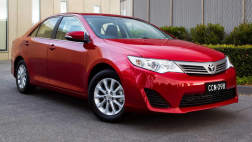It's a new Volvo S60 and it uses an updated and improved version of the City Safety system that already helps XC60 drivers avoid low-speed rear-enders.
A combination of camera and radar scans ahead of the vehicle, looking for what the vehicle's pre-programmed computers already know is a human being. The sensors look for a combination of sizes and shapes, also looking at movement, to know if the person is likely to step into the path of the vehicle. It sounds complicated, and it is.
Watching a computer simulation of the system is fascinating, not just because it can pick out human shapes but because it can monitor so many at the same time and then detect the ones which are likely to blunder into the path of a car .Like a youngster chasing a ball …Things get more impressive during a live demonstration.
Heading at 25km/h towards a life-sized child dummy is not fun, but the Volvo does its job and applies emergency braking to pull up short with no threat to the dummy. It works with an adult-sized dummy too, and the XC70 test car also has the City Safety system I found some impressive in the XC60.
It's only a slow-speed system, but — unlike a Toyota project I tried several years ago — it works and it's real. Volvo has a complicated name for its system, including words like 'auto braking' and 'human sensing', but after the demonstration in Sweden I think it should be tagged simply as KidSafe.
Volvo intends to have KidSafe in the S60 in Australia before the end of 2010, with a rapid rollout across the range. It's not cheap but, like all safety systems, it will be standard equipment and will make a genuine difference on the world's roads.
Meanwhile, a battery electric car in a major crash sounds like a recipe for disaster. Acid everywhere, live cables, leaking gases ... That's why Volvo is smashing through the barriers to having its first plug-in electric car on the road by 2012. It has just rammed the back end of a battery test car at better than 50km/h to see exactly what happens with its experimental battery safety cell. The good news is, nothing ...
The back of the V70 wagon was destroyed but the heavyweight structure around the battery pack stayed intact, there was no fluid leakage, and the rest of the car was not compromised.
Now Volvo is looking to transfer the knowledge into its upcoming plug- in cars, and the hybrids it also sees as part of its future. "Electrification gives much more energy for transport. It's a key opportunity," says Dr Marten Levenstam, who heads long-range strategy and innovation at Volvo.





.jpg)
.jpg)

.jpg)
_0.jpg)


.jpg)




.jpg)
.jpg)










